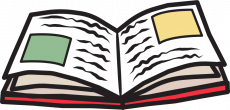Key Stage 2 SAT Results: Literacy progress, challenges, and the Mighty Writer Advantage
Overview of KS2 SATs Literacy Results 2025
The recent KS2 SATs report for the 2024/25 academic year provides a detailed insight into national literacy attainment, covering reading, writing, and Grammar, Punctuation and Spelling (GPS). KS2 SATs are foundational assessments that help gauge the literacy levels of pupils, and the headline figure shows that 62% of pupils met the expected standard. This metric is particularly noteworthy as it represents the largest improvement observed since the pandemic. As reported, "62% of pupils met the expected standard the largest improvement observed since the pandemic," which sets the scene for further analysis.
The combined literacy and numeracy results demonstrate that overall attainment has edged up slightly from 61% in 2024. While the current combined figure, at 62%, still falls short of the pre-pandemic level of 65%, it indicates a modest recovery and improvement in literacy outcomes. This improvement is significant given the challenges faced by schools in recent years. The data invites educators to re-examine strategies in response to the evolving educational landscape.
The improvement shown in the KS2 SATs is significant as it marks the first large increase in combined attainment since the disruptions caused by the pandemic. The detailed figures and comparisons with previous years highlight both progress and ongoing challenges. With the progress acknowledged, there remains a keen focus on targeted interventions to lift attainment further. This context sets the foundation for a deeper exploration into the specific literacy subjects and what these statistics mean for the future.
Detailed Analysis of Attainment in Literacy Subjects
The report highlights that 75% of pupils achieved the expected standard in reading, showing a clear improvement from 74% in 2024. This progress is particularly encouraging as it has now surpassed pre-pandemic figures, which stood at 73%. The increase in reading attainment suggests that efforts to bolster this area are having a positive impact.
In contrast, writing remains a challenging area for many pupils. The attainment in writing increased marginally to 72% of pupils meeting the expected standard, representing a slight improvement of 0.5 percentage points compared to the previous year. Despite this progress, writing continues to record the lowest attainment among the literacy subjects. This small increment in writing performance suggests that further targeted measures are required to support pupils who struggle with written expression.
In the area of Grammar, Punctuation and Spelling (GPS), results show stability with 73% of pupils reaching the expected standard. This consistency indicates that strategies in this area are maintaining pupils' competency levels. The GPS scores have remained steady, reflecting an ongoing reliability in measuring these key literacy skills. The performance in GPS serves as a necessary benchmark for supporting broader literacy goals within primary education.
The report also provides insight into higher standard attainment metrics, where only 8% of pupils met the advanced criteria in the combined literacy score. The breakdown of higher standard data highlights that while reading has seen significant gains, writing still lags behind with fewer pupils reaching greater depth. This comparison among individual subjects emphasises the need for continued improvement, particularly in writing. The reference, "75% in reading, 72% in writing, and 73% in GPS reflect varied progress across subjects," encapsulates the overall performance trends.
Exploring the Gender Divide in Literacy Performance
The data reveals clear gender trends, with girls consistently outperforming boys across most literacy areas. Girls have maintained a superior level of attainment in reading and in combined scores for reading, writing, and maths. This overall trend reinforces the need to understand and address the gender divide in classroom practices and tailored support. It is evident that the majority of girls are meeting or exceeding expectations compared to their male counterparts.
Specifically, the reading attainment gap shows that girls achieved an expected standard rate of 78% compared to 72% for boys, resulting in a 6 percentage point difference. In writing, the gender disparity is even more pronounced, with a notable 12 percentage point gap in favour of girls during teacher assessments. Such disparities highlight critical areas where targeted interventions could help support underperforming pupils. The reported finding, "Girls outperform boys by 6 percentage points in reading and have a 12 point advantage in writing teacher assessment," illustrates these differences well.
This gender divide has significant implications for teaching strategies and resource allocation. Educators may need to implement specific initiatives aimed at encouraging boys to improve their literacy skills and to address the particular challenges in writing. Addressing this gap could lead to a more balanced achievement profile and ensure that all pupils receive the support they need. A focussed approach to remedy these disparities will help raise overall literacy outcomes in future cohorts.
Enhancing Literacy with Mighty Writer
Mighty Writer presents a tactile and engaging resource designed to make the process of writing both fun and effective. The innovative tool incorporates colourful image tiles and a variety of symbols to help children construct sentences, thereby improving literacy outcomes in KS1 and intervention in KS2. This hands-on approach not only captures the interest of pupils but also enhances their ability to understand sentence structure and composition.
In addition to the engaging resource, Mighty Writer offers extensive teacher support including a comprehensive guide, CPD training workshops for both teachers and teaching assistants and more. The dedicated teachers guide and CPD sessions ensure that educators are fully equipped to integrate the resource into their curriculum, enabling them to further boost literacy levels. This proposition is essential given the current challenges in writing and the gender gaps observed in literacy performance.
Sources:
https://explore-education-statistics.service.gov.uk/find-statistics/key-stage-2-attainment/2024-25
https://explore-education-statistics.service.gov.uk/find-statistics/key-stage-2-attainment-national-headlines/2024-25
